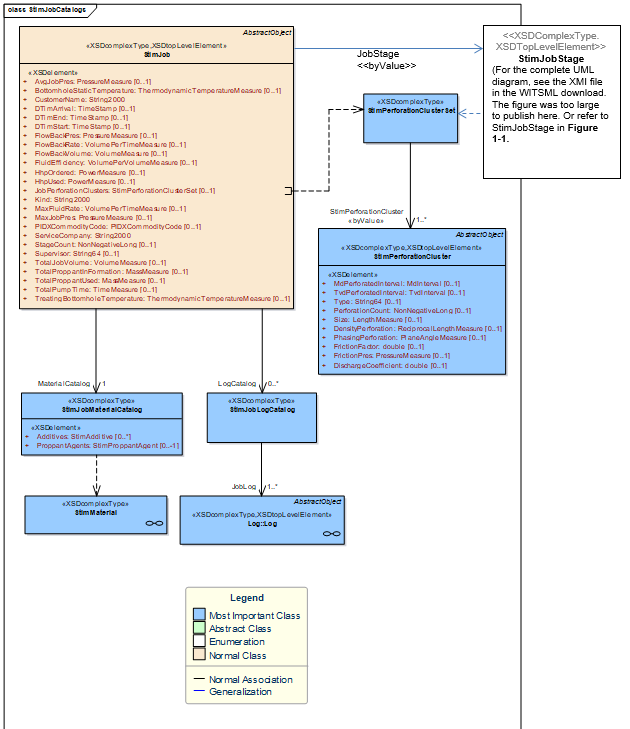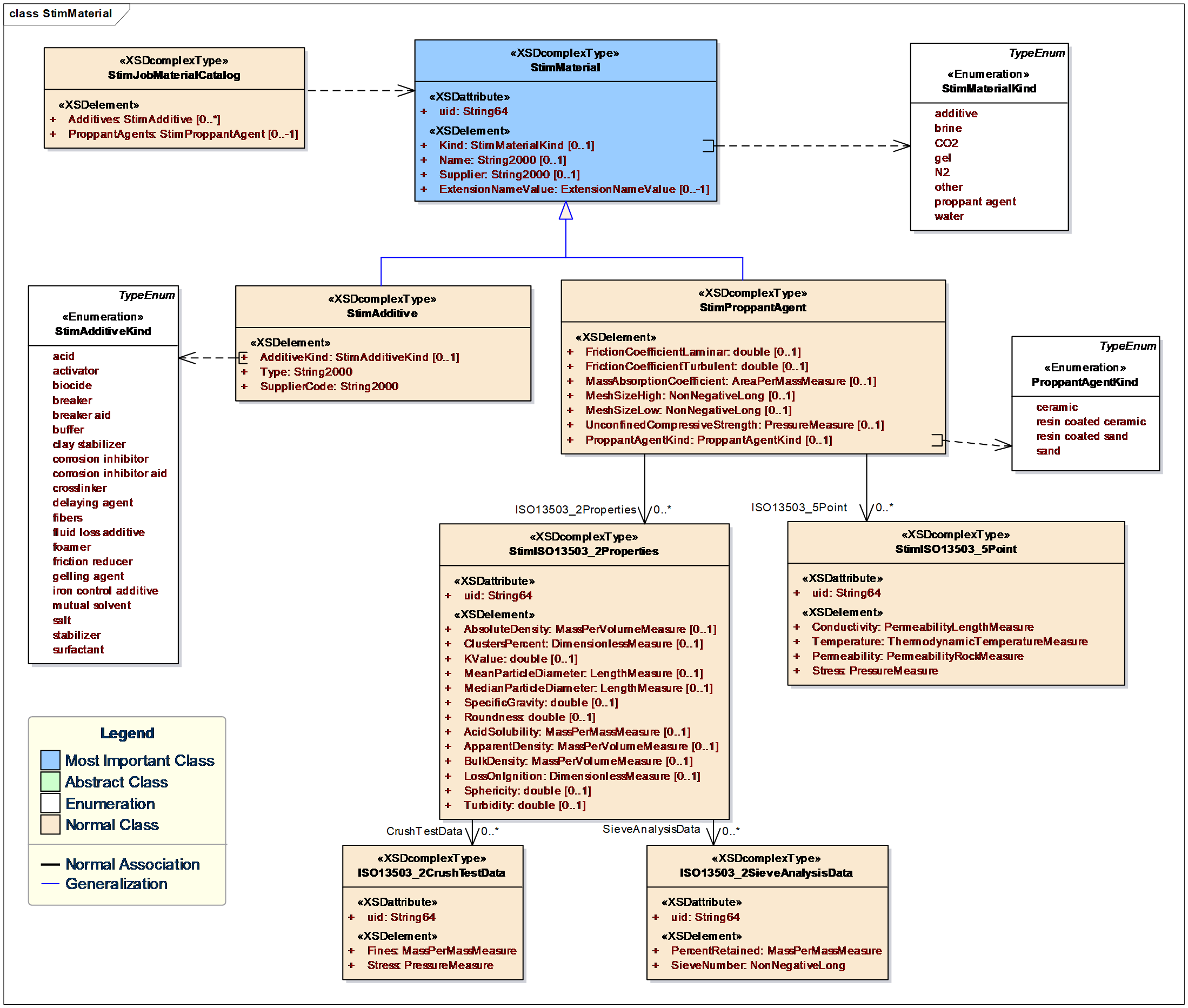9.3.3 Specifying Stim Fluid, Materials, and Material Quantities
| Topic Version | 1 | Published | 11/11/2016 | |
| For Standard | WITSML v2.0 | |||
In the previous version of the stim job object, materials had to be repeated for each stage of a stimulation job. Because stimulation jobs in current industry practice now can contain 60 or more stages, a new, more efficient approach was needed.
A stim job object can now contain a catalog of materials for that particular job (see Figure 9.3-1 and Figure 9.3.3-1 ); any stage of the stimulation job can reference material(s) in the catalog, thereby eliminating the need to repeat the materials for each stage.


The stim fluid object is the fluid (without the proppant) that is carrying the proppant downhole. Proppants as a concept refers to the materials left in the well or consumed in the process of making the stimulation.
The stim material catalog object contains a set of stim material objects representing additives and proppants that are used during a stimulation job. These materials can be used as a catalog by referencing the material from stim material quantity using a UUID instead of repeating the material properties.
Figure 9.3.3-2 shows a UML diagram of individual materials. For proppants, additional details can be provided (if available). For example, properties related to ISO 13503.2 properties (e.g., density, solubility, apparent density) and crush tests, and ISO 13503.6 point data (e.g., conductivity, permeability and stress) can describe useful details of the proppant material properties.
The stim fluid object uses the stim material quantity objects to get the “material reference” string, which is the UUID of stim material quantity. Each material type has a UUID as an attribute; and references are always that UUID.